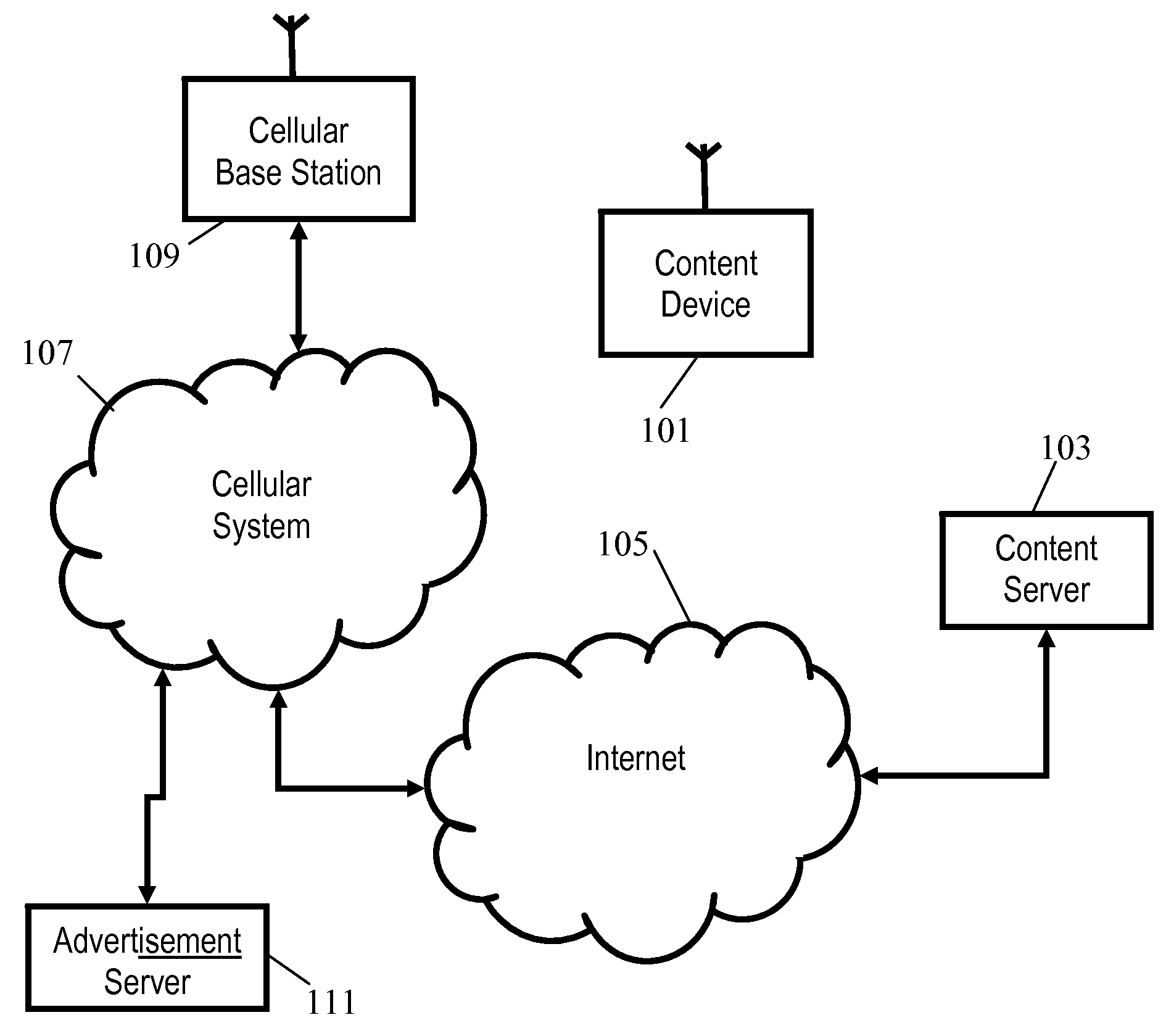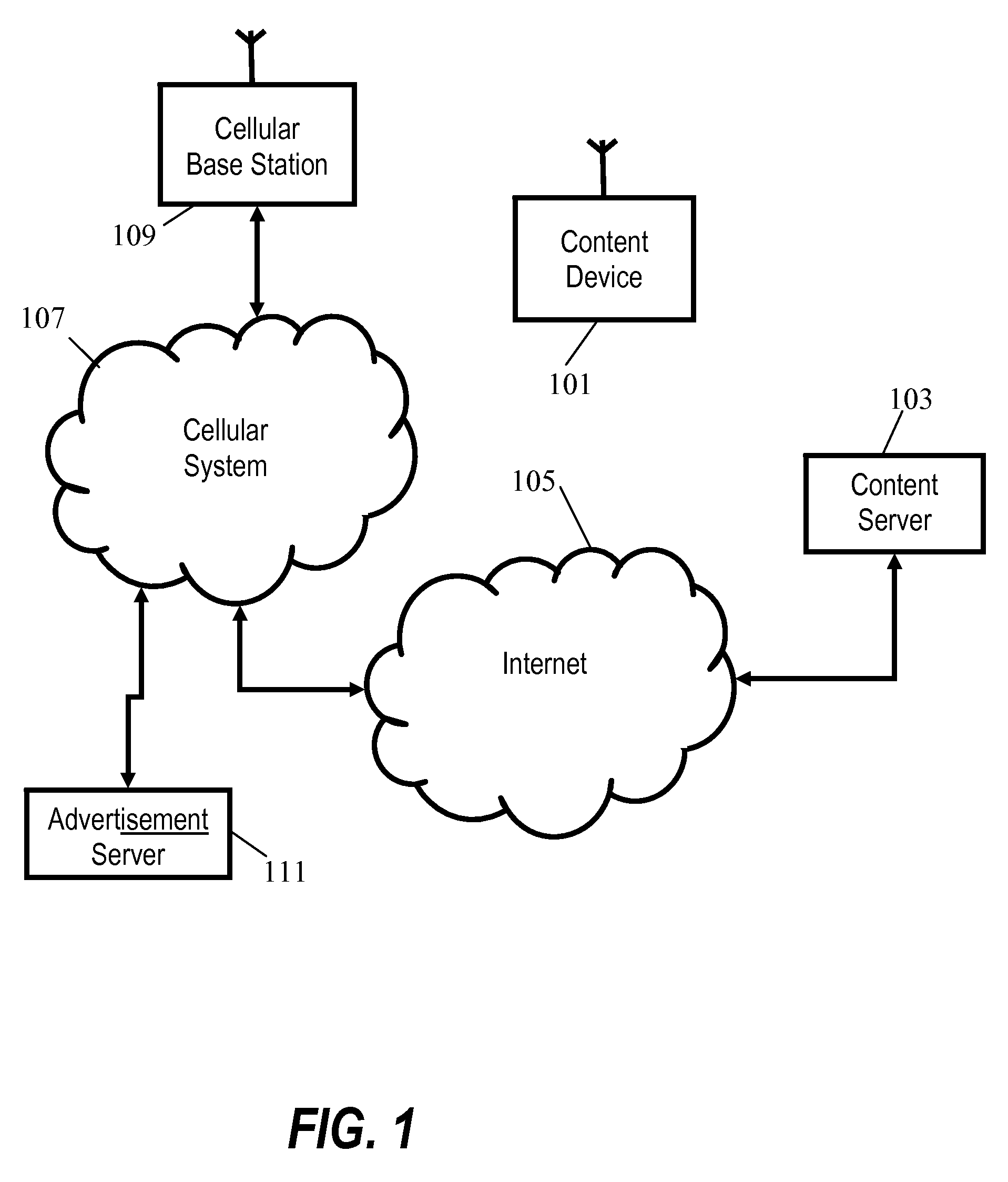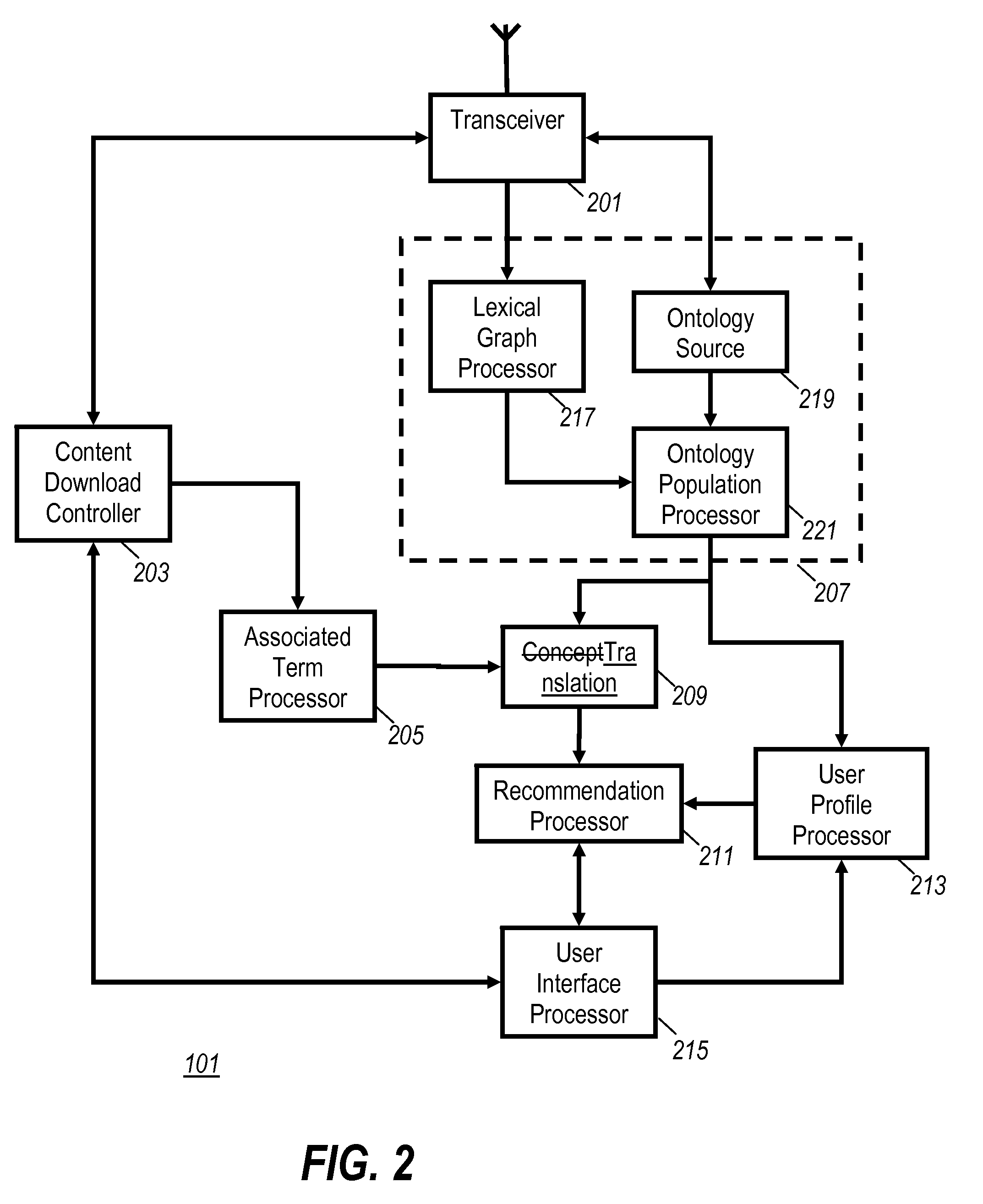Method and system for recommendation of content items
- Summary
- Abstract
- Description
- Claims
- Application Information
AI Technical Summary
Benefits of technology
Problems solved by technology
Method used
Image
Examples
Embodiment Construction
[0027]The following description focuses on embodiments of the invention applicable to selection of content items, such as text documents, web pages, music clips, advertisements etc. However, it will be appreciated that the invention is not limited to such applications but may be applied to many other types of content items.
[0028]FIG. 1 illustrates a communication system used to distribute content to a content device 101 which is capable of consuming content. In the specific example, the content device 101 is a mobile communication device capable of presenting content to a user including presenting video clips, music clips, text documents and web pages to a user. In other embodiments, the content device 101 may for example be a set-top box, a personal computer or a media player. In the example, the content is provided by a content server 103 coupled to a communication network which in the specific example is the Internet 105. The Internet 105 is coupled to a cellular system 107 which...
PUM
 Login to View More
Login to View More Abstract
Description
Claims
Application Information
 Login to View More
Login to View More - R&D
- Intellectual Property
- Life Sciences
- Materials
- Tech Scout
- Unparalleled Data Quality
- Higher Quality Content
- 60% Fewer Hallucinations
Browse by: Latest US Patents, China's latest patents, Technical Efficacy Thesaurus, Application Domain, Technology Topic, Popular Technical Reports.
© 2025 PatSnap. All rights reserved.Legal|Privacy policy|Modern Slavery Act Transparency Statement|Sitemap|About US| Contact US: help@patsnap.com



